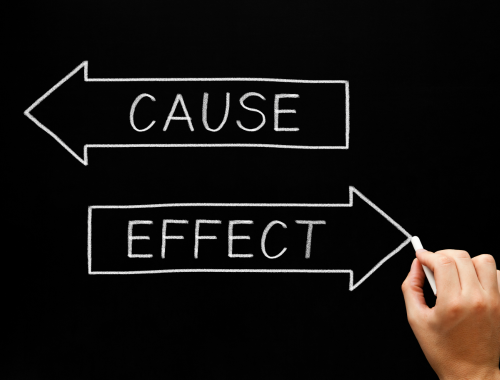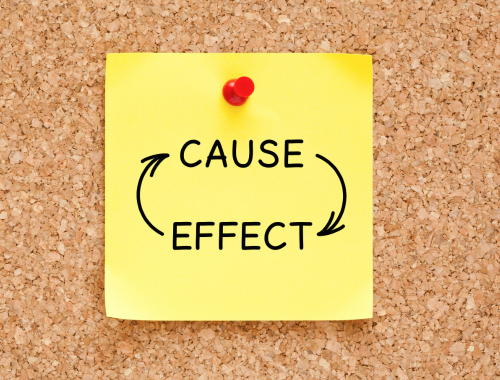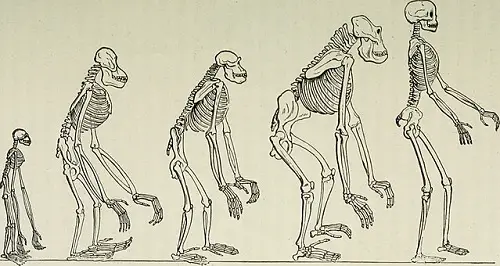
Exploring the Common Threads: Similarities in Cause and Effect
The concept of cause and effect is a fundamental principle that permeates various disciplines and aspects of life. Whether in scientific inquiry, historical analysis, or everyday decision-making, understanding the relationships between causes and their resulting effects is crucial. This article delves into the commonalities that underlie the cause-and-effect phenomenon, highlighting how this fundamental concept manifests across diverse domains.

Universal Principle:
- Cause and effect are universal principles governing the natural order. From the physical sciences to social sciences, this concept serves as a foundational framework for understanding relationships and predicting outcomes.
Interconnectedness:
- The essence of cause and effect lies in the interconnectedness of events. Every cause is linked to an effect, creating a web of relationships that shape the course of events in various systems and processes.
Predictive Power:
- One of the shared characteristics of cause and effect is its predictive power. By understanding the causal relationships, it becomes possible to anticipate and forecast outcomes, allowing for informed decision-making and strategic planning.
Temporal Sequence:
- Cause and effect unfold in a temporal sequence, where the cause precedes the effect. This chronological order is a common feature, whether examining natural phenomena, historical events, or personal experiences.
Scientific Inquiry:
- In the realm of scientific inquiry, the scientific method relies on identifying and testing cause-and-effect relationships. Establishing causation through rigorous experimentation is a cornerstone of scientific advancement.
Historical Analysis:
- Historical events are often analyzed through the lens of cause and effect. Understanding the factors that led to significant historical occurrences provides insights into the complexities of human societies and the impact of pivotal events.
Decision-Making:
- Everyday decision-making is guided by an understanding of cause and effect. Individuals assess potential actions, considering the likely consequences and anticipating how their choices will influence outcomes.
Social Sciences:
- Cause and effect are integral to social sciences, where researchers explore the relationships between variables in fields such as psychology, sociology, and economics. Identifying causal links contributes to a deeper understanding of human behavior and societal trends.
Chain Reactions:
- Cause-and-effect relationships often manifest as chain reactions, where a single cause sets off a sequence of interconnected effects. This cascading effect is observable in various contexts, from ecological systems to economic markets.
Intervention Strategies:
- Addressing issues and solving problems often involves intervening in cause-and-effect dynamics. By identifying the root causes of a problem, individuals and organizations can implement targeted strategies to bring about desired outcomes.
In conclusion, the similarities in cause and effect extend across disciplines and applications, emphasizing the pervasive nature of this fundamental concept. Whether unraveling the mysteries of the natural world, interpreting historical events, or navigating the complexities of decision-making, recognizing and understanding cause-and-effect relationships is essential for a comprehensive and insightful worldview.
Here’s a simplified comparison table highlighting the similarities of cause and effect across various domains:
| Aspect | Cause and Effect |
| Universal Principle | Governs the natural order universally. |
| Interconnectedness | Events are linked, creating a web of relationships. |
| Predictive Power | Allows for anticipation and forecasting of outcomes. |
| Temporal Sequence | Unfolds in a chronological order, cause preceding effect. |
| Scientific Inquiry | Central to the scientific method for testing and experimentation. |
| Historical Analysis | Events are often analyzed through the lens of cause and effect. |
| Decision-Making | Guides everyday decision-making by assessing potential consequences. |
| Social Sciences | Integral to understanding human behavior and societal trends in fields like psychology, sociology, and economics. |
| Chain Reactions | Manifests as chain reactions with a single cause leading to interconnected effects. |
| Intervention Strategies | Addressing issues involves identifying root causes and implementing targeted interventions. |
Understanding the similarities in cause and effect provides a comprehensive framework for exploring relationships and dynamics across diverse domains.
FAQ: Similarities of Cause and Effect
Q1: Is the concept of cause and effect applicable universally?
A1: Yes, the concept of cause and effect is a universal principle that applies across various disciplines and aspects of life. It governs the relationships between events and outcomes.
Q2: How does cause and effect demonstrate interconnectedness?
A2: Cause and effect demonstrate interconnectedness by establishing links between events. Every cause is connected to an effect, creating a web of relationships that shape the course of events.
Q3: Can cause and effect be used for predictive purposes?
A3: Absolutely. Cause and effect have predictive power, allowing for the anticipation and forecasting of outcomes. This predictive ability is crucial for informed decision-making.
Q4: Does cause and effect follow a specific chronological order?
A4: Yes, cause and effect unfold in a temporal sequence where the cause precedes the effect. This chronological order is a fundamental characteristic of the cause-and-effect relationship.
Q5: How is cause and effect utilized in scientific inquiry?
A5: In scientific inquiry, cause and effect are central to the scientific method. Researchers identify and test cause-and-effect relationships to advance scientific understanding through experimentation.
Q6: Can cause and effect be applied to historical analysis?
A6: Yes, historical events are often analyzed through the lens of cause and effect. Understanding the factors that led to significant historical occurrences provides insights into the complexities of human societies.
Q7: How does cause and effect guide everyday decision-making?
A7: Cause and effect guide everyday decision-making by helping individuals assess potential actions. Considering the likely consequences allows for making informed choices.
Q8: Is cause and effect integral to social sciences?
A8: Absolutely. Cause and effect are integral to social sciences, where researchers explore the relationships between variables in fields such as psychology, sociology, and economics.
Q9: Can cause and effect manifest as chain reactions?
A9: Yes, cause and effect often manifest as chain reactions, where a single cause sets off a sequence of interconnected effects. This cascading effect is observable in various contexts.
Q10: How is cause and effect employed in intervention strategies?
A10: Addressing issues and solving problems often involves intervening in cause-and-effect dynamics. By identifying the root causes of a problem, individuals and organizations can implement targeted strategies to bring about desired outcomes.
Understanding the principles of cause and effect provides a foundation for exploring relationships and making informed decisions across diverse domains.












Leave a Reply